#fossil shell Madagascar
Explore tagged Tumblr posts
Photo

MELCHIORITES EMERICI Iridescent Fossil Ammonite Mother of Pearl Shell Albian Cretaceous Madagascar Genuine
Discover a stunning, genuine piece of ancient history with this MELCHIORITES EMERICI iridescent fossil ammonite, preserved with beautiful Mother of Pearl shell. This exceptional specimen dates from the Albian Stage of the Early Cretaceous Period (approximately 113 to 100 million years ago) and was found in the fossil-rich layers of Mitsinjo, Madagascar.
Geology & Origin:
Mitsinjo, located on the western coast of Madagascar, is renowned for its Cretaceous marine fossil beds. During the Albian stage, this region was submerged under a shallow sea, providing perfect conditions for marine life such as ammonites to thrive and fossilize. Over millions of years, mineralization preserved the shell's intricate structures, with the original aragonite layer transforming into breathtaking iridescent "Mother of Pearl" (nacre), creating shimmering hues across the fossil's surface.
Fossil Type & Species:
Type: Fossil Ammonite (Extinct marine cephalopod)
Species: Melchiorites emerici
Preservation: Original shell with iridescent mother of pearl layer
Features:
Genuine, 100% natural fossil
Comes with a Certificate of Authenticity
Carefully selected for quality and aesthetic appeal
The specimen shown is the exact piece you will receive
Scale rule / cube shown = 1cm: Full sizing visible in photo
Why Buy From Us?
All of our fossils are carefully hand-selected and professionally prepared to ensure they meet the highest standards. We guarantee that every item is 100% genuine, and each comes with a Certificate of Authenticity for your peace of mind.
Perfect for collectors, enthusiasts, educational purposes, or as a unique natural history decor piece!
#Melchiorites Emerici#Iridescent Ammonite#Fossil Ammonite Madagascar#Albian Fossil#Cretaceous Fossil#Mother of Pearl Shell#Mitsinjo Fossil#Genuine Ammonite#Fossil with Certificate#Fossil Collector Specimen#Natural Ammonite Fossil#Fossil Shell Madagascar#Ammonite Iridescent Shell#Fossil Display Piece
0 notes
Text
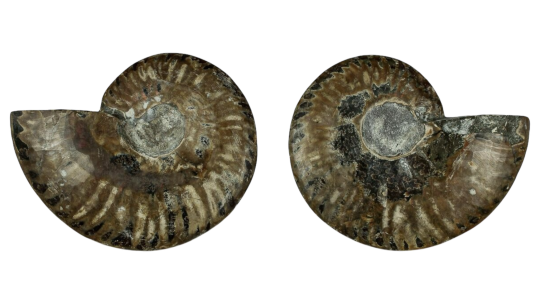
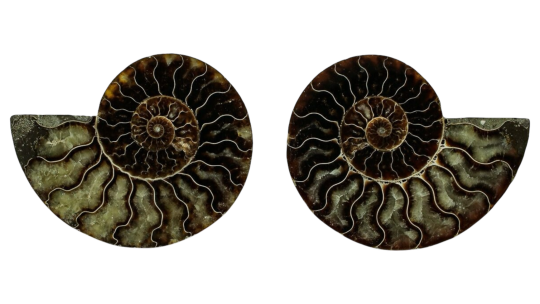
4" Cut & Polished, Agatized Ammonite Fossil - Madagascar
#ammonite#png#transparent#paleontology#fossil#fossils#ammonoid#fossil shell#agatized#agatized ammonite#prehistoric#aes#madagascar
122 notes
·
View notes
Text
I'm back from the rock show! Here are the Cool Rocks I got!
Let's start with the fossils this time.


This year I finally tracked down a Tully Monster, which is my state fossil! He's not a complete fossil, but you can see his eyestalk and the bottom of his proboscis very clearly.

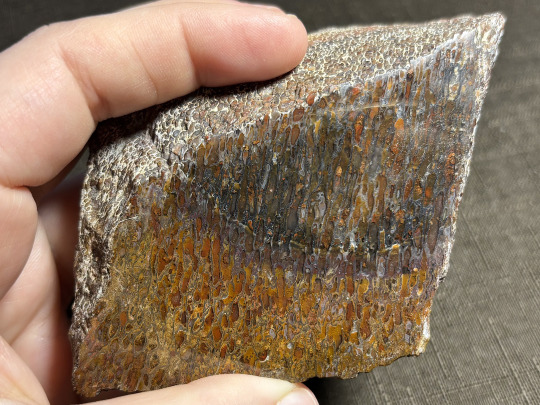
A big chunk of dinosaur bone from Utah! Dino bone is easy to ID due to its distinct pattern, where agate and jasper have filled in the porous structure of the bone.

This is a coprolite, a piece of fossilized dinosaur poop! This one is from Madagascar.

This one is a stromatolite, a rock formation created by a colony of bacteria! Stromatolites are some of the oldest fossils on Earth. In fact, the microbes that make them were likely the very first lifeforms on the planet. And they're still around today, mostly unchanged from their ancient ancestors, and still making rock formations! This little stromatolite came from Madagascar.

A giant chunk of Turritella agate, which I won at the silent auction! Turritella agate is made of a bunch of fossilized snail shells all packed together and filled in with agate. (Despite the name, they're not actually Turritella snails, but rather Elimia tenera.) When cut and polished, it reveals beautiful organic patterns. This stuff comes from Wyoming.
That's all the fossils I brought home! Now on to the minerals!

I was very responsible and didn't come home with a million agates this year, but I couldn't resist this gorgeous rain flower agate! Hailing from Nanijing, China, these agates are naturally polished by the Yangtze River and have a unique, frosted finish.

Another cabochon for my cab collection! This is afghanite, a blue mineral that isn't related to the sodalite family, but likes to grow alongside it.

It fluoresces!


Vesuvianite, a mineral that gets its name because it was first discovered on the slopes of Mt. Vesuvius! The dark crystals growing on its surface are garnets. This piece is showing off a great example of vesuvianite's crystal habit and terminations.

A huge zircon crystal! Zircon is the oldest mineral on planet Earth. There's a deposit in Australia which has been radiometric dated to be about 4.4 billion years old! Not this guy, though. This one is from Pakistan.

It fluoresces!

An AMAZING specimen of anatase! It's extremely rare for anatase crystals to grow this large. In fact, the only other anatase crystals I've seen in person had to be viewed under a microscope!
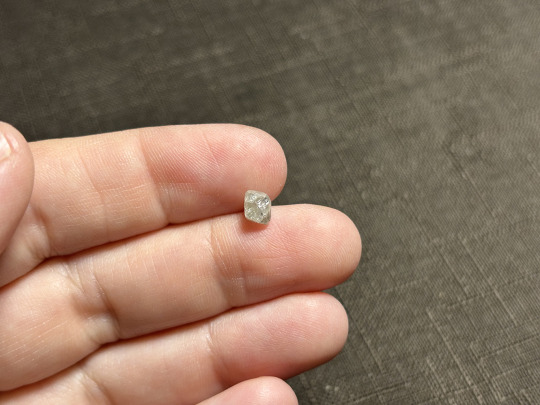
Here's the most expensive piece I came home with - a South African diamond! Can you believe I didn't have a diamond in my collection yet? That problem has been remedied.

It fluoresces!

And finally, my friends and I broke open a few geodes at the geode-cracking booth. I picked out some Trancas geodes from Mexico.




This locale produces weird, wavy, wormy crystals! These formations occur when quartz (in the form of chalcedony or hyalite) grows atop hair-thin, curly crystals of anhydrite.

They fluoresce!
And that was my haul from the rock show!
#rock collecting#red pen has cool rocks#tully monster#dinosaur bone#coprolite#stromatolite#turritella agate#rain flower agate#afghanite#vesuvianite#zircon#anatase#diamond#geodes#fluorescence
345 notes
·
View notes
Text
Sainte Marie Mineral Show Finds 2024 Complete List
To claim an item, please comment on the individual post. The complete rules can be found here. Please be sure to read the rules before claiming :)
Preview Items:
Amethyst Stalactite Specimen on Stand
Blueberry Fluorite on Quartz Specimen
Fluorite on Calcite Specimens
July 5th - 7th Sale:
Pink Opal Palm Stones
Bolivianite Palm Stones
Rhodochrosite Palm Stones
UV Reactive Calcite Specimens
Polished Malachite w Chrysocolla - Sold Out!
Polished Tourmalinated Natural Citrine
Rare Opalized Fluorite from Russia
Harlequin Jade from Italy
Scenic Quartz Round Gems
Rare Natural Citrine from Mexico
Amethyst Crystal Shards
Ocean Jasper Bowls - Sold Out!
Blue Calcite Starfish from Argentina
High-Grade Blue Calcite Palm Stones from Argentina
Phantom Amethyst Spheres
Tumbled Agate from Bulgaria - Sold Out!
Blue Barite Specimens from Spain
Epidote Clusters from Turkey
"Forest Quartz" from Turkey
Sparkly Grape Agate Clusters
Trolleite Hearts - Sold Out!
High-Grade Black Tourmaline Crystals
Cobaltoan Calcite from Morocco
Fossilized Snail Shells from Hungary
Sterling Silver Meteorite & Libyan Desert Glass Pendants
Sterling Silver Meterotie & Moldavite Pendants
Moldavite Cabochons - Sold Out!
Moldavite Adjustable Bracelets
Chrysocolla Freeforms from Peru
Charoite Slabs - Sold Out!
Natural Citrine Facets from Madagascar
Sphalerite Facets from Spain - Sold Out!
Harlequin Quartz Facets from Madagascar
Natural Smoky Ametrine Cabochons from Brazil
Unique Included Quartz Cabochons/Gems
Sparkly Agate Druzy Points
Large Trolleite Obelisks
Large Purple Labradorite Crescent Moons - Sold Out!
Pink/Red Chalcedony Geodes from Morocco
Large Prehnite Clusters from Morocco
New Find "Agathyst" Flames from Brazil
Amethyst & Calcite Specimens from Uruguay w Metal Stands
Thank you so much! I will periodically update the list with sold out items.
44 notes
·
View notes
Text
SandWing Names - Letter A
Aardvark (A type of nocturnal burrowing mammal with long snouts.) Aardwolf (A kind of hyena.) Aarush (Hindi word that means “first ray of sun.”) Abalos (A dune field on Mars. Also good for a NightWing hybrid.) Acacia (A genus of trees.) Accona (A desert in Italy.) Acinonyx (The genus the cheetah belongs to.) Adder (A kind of viper.) Adenium (Also known as the desert rose. A type of flower.) Adobe (A kind of clay used as a building material, typically in the form of sun-dried bricks. Also good for a MudWing hybrid.) Adust (Scorched or burned.) Aeonium (Plants that grow in warm, dry climates.) Aesculapian (A type of non venomous snake.) Agamidae (A family of iguanian lizards.) Agosto (Spanish for 'august'.) Agua (Spanish for 'water'.) Aker (The ancient Egyptian personification of the horizon.) Alectrona (The Greek goddess of the sunrise.) Alhagi (Also known as Camelthorns. A type of desert shrub.) Alluaudia (A type of succulent native to Madagascar.) Almond (The seed of the almond tree.) Aloe / Aloe Vera (A type of succulent that primarily grows in arid climates.) Anteater (Toothless insect eating mammals with long tongues.) Arroyo (A steep-sided gully formed by the action of fast-flowing water in an arid or semi-arid region.) Argali (Also known as the mountain sheep.) Antelope (A genus of hoofed mammals in the Bovidae family.) Aspidis (Latin for 'cobra'.) Anthill (A nest in the form of a mound built by ants or termites.) Ari (Hebrew for “lion.") Ash (The powdery substance that remains after something burns.) Arid (A land or climate that has little to no rain and is extremely dry.) Antlion (Insects primarily found in sandy regions. The larva commonly trap small insects in pits they've dug in the ground.) Aridisol (Arid soil.) Anhur (An Egyptian god of war.) Anubis (The Egyptian god of the dead.) Amargosa (A desert along the California-Nevada border.) Ankh (An ancient Egyptian symbol that represents life.) Anopheles (A genus of mosquitos.) Amaterasu (Japanese goddess of the sun.) Arenaceous (Consisting of sand particles., or animals and plants living or growing in sand.) Ariocarpus (A type of succulent.) Amber (A hard and translucent fossilized resin, or a yellow/orange color.) Armadillo (Mammals with unique shells, also known for digging.) Apophis (Ancient Egyptian god of chaos.) Ant (Insects that live in colonies.) Atacama (A desert in Chile.) August (The last summer month.) Aureate (Denoting, made of, or the color of gold.) Aurum (The Latin word for gold and source of its chemical symbol.) Axlewood (A tree native to India.)
#wings of fire#wof#wings of fire names#wof names#sandwing#sandwing names#a names#mammal names#names in other languages#location names#desert names#reptile names#snake names#tree names#yellow color names#god/goddess names#plant names#insect names#landscape names
6 notes
·
View notes
Text
Local Insects Roundup Jan - Mar 25

The charismatic ground beetle Carabus cancellatus... What a treat! This genus is informally referred to as the slug hunters, which makes them sound incredibly cool... Scary predator hunting the fearsome slug. Talking about the genus, it has over 900 species, which is unusually high. Experts speculate that this is because they're not very good at dispersal, so local populations became genetically distinct as they stayed somewhat isolated. One of the reasons for this is that they can't fly - their elytra are fused. Most Carabus species are nocturnal, but this one is also active during the day.

The beautiful Dinocras stonefly nymph. Stoneflies (Plecoptera) are one of the oldest orders of winged insects, with close relatives identified from fossils from the Carboniferous Era around 300 million years ago. The nymphs are very sensitive to water pollution, so I'm always happy to see some in our local river. I've seen dozens of stonefly adults and nymphs around where I live but haven't managed to get even one identified to the species level. No one seems to be studying them, especially the Pyrénéan species (pretty sure I keep seeing species documented as only living in the Alps), so we have to appreciate them twice as much to make up for it! Their moulted larval shell is a common sight on rocks in summer.

The industrious Limnephilinae caddisfly larva. I think to identify caddisfly larval species you have to destroy their cute homes - the collection of twigs dragging behind them. I won't do it! Or probably you need a better camera which I don't have, oops. These guys make a little tube to inhabit as camouflage. It's effective at a glance, but they're pretty active, so it doesn't take long to realize there's a creature in there when a twig mysteriously keeps crawling. These guys are also a great indicator of water pollution, and they're everywhere, which makes me feel slightly better about the state of the natural world.


The sneaky water snipe fly (Athericidae) larva. Unlike the stoneflies and caddisflies shown above, which are not flies and instead each a cool different thing, water snipe flies are actually flies (Diptera). When I found this little guy, I had no idea what it was, and I thought the bigger end was the head. Then it started moving backwards, which was confusing, so maybe the other end was the head? Then it turns out these guys "lack a true head" so no wonder I was confused. I couldn't get an ID more specific than the family, but Atherix ibis (which this one could be, they're present in the region 🤷) lay their eggs under bridges and then when they hatch the larvae just... PLOP fall in the water, which is incredible, A+ parenting.

Honourable mention (not an insect):
The stunning pill milipede Loboglomeris rugifera. Very cute, and very local in distribution. Although they look like "pill bugs" (woodlice, which are terrestrial crustaceans), these are myriapods, in fact milipedes. It's an example of convergent evolution making two genetically different species resemble one another. Pill milipedes are generally bigger - this one was 2cm long. There's some very cool pill milipedes in Madagascar that are an example of island gigantism - some can get as large as an orange (?!) while being an incredible green colour.
2 notes
·
View notes
Text

These genuine ammonite fossils from Madagascar have inlaid abalone shell set into the fossil's chambers. Unique earrings!
2 notes
·
View notes
Text
Happy Fossil Day!

National Fossil Day is an annual celebration held to highlight the scientific and educational value of paleontology and the importance of preserving fossils for future generations. - National Park Services
As we are a server who bases our lore very heavily on fossils, from the prehistoric environment down to our characters, the saber-toothed cats, we thought we’d hop in and celebrate this day with some fun facts about fossil animals you could possibly encounter here in the Baobab!
Deinotherium
The heavy-weight representative of TuskClan’s megafauna is colloquially known as simply “The Elephant���, though you may be quick to spot that these are no modern-day African Elephants. Instead, the proboscideans that you’d encounter out on the savanna are based on the famous extinct genus of DeinotheriumI, a close relative of modern elephants. They are known for their distinct tusk-shape, curving downwards instead of the modern elephants outward tusk!
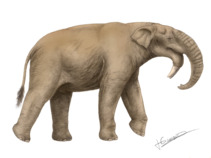
An artistic reconstruction of the species D. bozasi
Caluma Benovskyi
Chameleons are some of the most recognizable reptiles on the planet, known for their prehensile tails and independently mobile eyes. Not much is known of the fossil chameleons of Africa, but there have been discoveries that show that there were indeed these funky little reptiles climbing around SunClan’s forests, changing colors to try and hide from even the most observant saber.
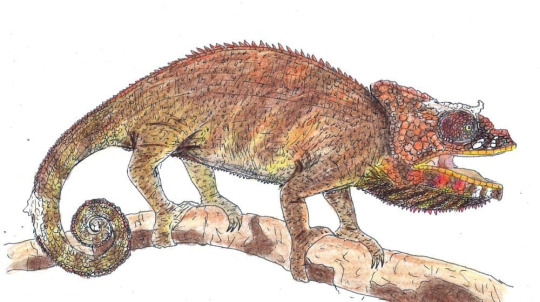
an artistic reconstruction of Caluma Benovskyi
Euthecodon
Out in the waters of BevyClan, especially in the crocodile lake, you’re likely to find yourself face-to-snout with one of the fiercest archosaurs left on the planet, the crocodile. The genus Euthecodon comprise of three species of long-snouted crocodiles, these beasts appear to have convergently evolved their signature snouts with modern-day gharials, and had originally been thought to have been an ancestor of the croc-cousins, though research has more heavily suggested that BevyClan is indeed home to true crocodiles.
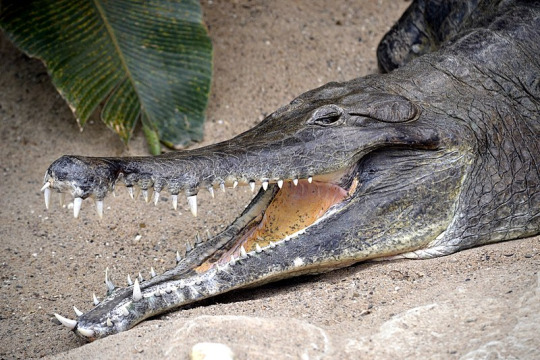
photo taken at a zoo in the Netherlands, of the Euthecodon’s closest living relative, Mecistops
Alongside these fun fossil creatures, sabers in the baobab clans have found some unique collectibles today, be it strange bugs in tree-sap in SunClan's fallen trees, ridged shells in the cub islands of BevyClan, or odd reptilian teeth in TuskClan's sand dunes! Maybe doing a bit of research could help our sabers understand what the world was like before they were in it, and what the Baobab region looked like many moons ago....
Sources and fun extra reads!
Black, Riley. “An Extinct “Anchor-Tusked” Proboscidean.” Science, 24 July 2009, www.nationalgeographic.com/science/article/an-extinct-anchor-tusked-proboscidean.
“Calumma Benovskyi, a New Fossil Chameleon from Kenya.” Www.chameleons.info, www.chameleons.info/l/calumma-benovskyi-a-new-fossil-chameleon-from-kenya/. Accessed 11 Oct. 2023.
Čerňanský, Andrej, et al. “The Only Complete Articulated Early Miocene Chameleon Skull (Rusinga Island, Kenya) Suggests an African Origin for Madagascar’s Endemic Chameleons.” Scientific Reports, vol. 10, no. 1, 10 Jan. 2020, p. 109, www.nature.com/articles/s41598-019-57014-5, https://doi.org/10.1038/s41598-019-57014-5.
commondescentpc. “Episode 66 – Elephants.” The Common Descent Podcast, 28 July 2019, commondescentpodcast.com/2019/07/27/episode-66-elephants/. Accessed 11 Oct. 2023.
“Euthecodon.” Wikipedia, 17 Mar. 2023, en.wikipedia.org/wiki/Euthecodon. Accessed 11 Oct. 2023.
Hitchcock, Edward. Elementary Geology: By Edward Hitchcock. Google Books, M. H. Newman & Company, 1847, books.google.com/books?id=dZiyAAAAIAAJ&pg=PA154&dq=dinotherium+++bank+++anchor&ei=-bFpSu_sCJKOyASrnpWgBA#v=onepage&q&f=false. Accessed 11 Oct. 2023.
“National Fossil Day (U.S. National Park Service).” Www.nps.gov, www.nps.gov/subjects/fossilday/index.htm. Accessed 11 Oct. 2023.
#discord warrior cat rp#discord warrior cat roleplay#discord wcrp#discord rp#warrior cats#sabertooth tiger#clansbeforetime#wcrp#clans before time#sabertooth cat#chameleon#crocodile#elephant#fossil#national fossil day#national fossil day 2023#fossil teeth#fossil shells#fossil in amber
6 notes
·
View notes
Photo

REMPC-C0040
Perisphinctes indogermanus
Jurassic, Oxfordian
Near Sakaraha
Tulear Province, Madagascar
6 notes
·
View notes
Photo

PROLEYMERIELLA Iridescent Fossil Ammonite with Mother of Pearl Shell, Lower Albian, Cretaceous: Mitsinjo, Madagascar
All of our Fossils are 100% Genuine Specimens and come with a Certificate of Authenticity.
Specimen: Proleymeriella Fossil Ammonite (with natural mother of pearl iridescence)
Age: Lower Albian, Cretaceous Period (approx. 113 to 100.5 million years ago)
Location: Mitsinjo, Madagascar
Scale cube = 1cm: Full sizing please see photo.
About the Fossil:
Proleymeriella is an extinct genus of ammonite, a type of marine mollusc that flourished during the Cretaceous period. This particular specimen originates from Mitsinjo, Madagascar, a region renowned for its beautifully preserved and naturally iridescent ammonites. The stunning mother of pearl shell preservation makes these fossils highly sought after by collectors and natural history enthusiasts.
Ammonites are among the most iconic and recognisable fossils, thanks to their distinct spiral-shaped shells. Despite their resemblance to modern-day nautilus, ammonites are more closely related to octopuses, squid, and cuttlefish. These marine creatures thrived in Earth's oceans between 240 and 65 million years ago before becoming extinct at the end of the Cretaceous period.
The beautiful rainbow-like sheen seen on this Proleymeriella ammonite is a result of the natural preservation of the original aragonite shell layer, creating a mother of pearl (nacreous) effect that shimmers under the light.
Geological Information:
Formation: Mitsinjo deposits, Madagascar
Age: Lower Albian, part of the Early Cretaceous Epoch
Environment: These ammonites lived in warm, shallow seas teeming with marine life, a rich ecosystem now preserved in the fossil record of Madagascar.
ACTUAL AS SEEN: The image shows the EXACT specimen you will receive. The fossil has been carefully hand-selected and professionally photographed to best represent its natural beauty.
Measurements are as accurate as possible; however, precise dimensions can be challenging to gauge due to the irregular shape of natural fossils. While we aim to portray colours as true to life as possible, variations can occur due to lighting conditions and device screen differences.
Once this specimen is sold, we will update the listing with a newly selected item, complete with new photographs and sizing.
Please Note:
If you have stored this item in your basket for a while, it remains available for others to purchase until checkout is complete.
We recommend saving or taking a screenshot of the item's photo at the time of purchase for your records.
We maintain records of every specimen photograph we upload.
#Proleymeriella fossil#iridescent ammonite#mother of pearl ammonite#Lower Albian fossil#Cretaceous fossil#Madagascan ammonite#Mitsinjo fossil#authentic ammonite#fossilised shell#Cretaceous ammonite#fossil collection#natural history#genuine fossil specimen#Jurassic marine fossils#ammonite display fossil#polished ammonite fossil#fossil shell Madagascar
0 notes
Text
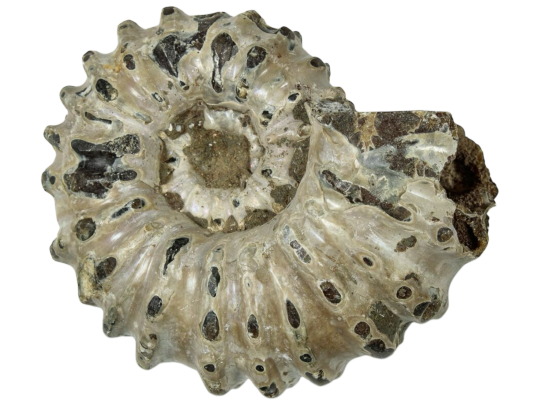
2.1" Bumpy Ammonite (Douvilleiceras) Fossil - Madagascar
#cretaceous#ammonite#bumpy ammonite#fossil shell#douvilleiceras#madagascar#png#transparent#paleontology#prehistoric#paleoblr
56 notes
·
View notes
Text
North America was a good end to the season, weird break from naming conventions aside!
Alamosaurus segment was a cool start. Was expecting it to be the last, but oh well. We didn't see much of the sauropods but it was still nice to see them. Tyrannosaurus, troodontids and Quetzalcoatlus all flocking to a dead one, and the Quetz actually scare off the T. rex. I'm sure some T. rex fanboy is upset about that somewhere, lol. but yeah, was a cool opening.
Oceans reject, staring Globidens and some ammonites. This was a nice strategy, and even as I always found Globidens interesting because of its teeth I didn't even consider more complex ways it could take down hard shelled prey.
The Pectinodon segment might've been my favourite. Unique cast, unique setting, and the critters themselves had lots of charm and character. The juvenile Pectinodon had nice colouration too, as was the touch of the father being the parent here, like actual troodont fossils.
The Triceratops segment was probably the most "typical" of the bunch, but it was still nice to see, especially all the individual variation between different trikes.
Nanuqsaurus hunting Ornithomimus was a nice end. Not my favourite segment, but still a different way of seeing tyrannosaurs hunt, especially because some of them probably COULD have been at least somewhat built for speed.
All in all, a good season! Not sure how I'd place it compared to Season 1, I feel similarly about both besides S2 having shorter length because they added the science stuff on the end of the eps.
Favourite episode... not sure. Maybe Badlands? You'd think it would be Islands, but I guess Badlands to me just felt the most consistent and cohesive, nitpicks about faunal choices in the third segment aside. Also can't go wrong with the Deccan Traps.
My favourite segments overall would be the Madagascar ones, however. Simosuchus, Adalatherium, and Beelzebufo help show the wonder of non-dinosaurs even as they shared the world with them.
As for the future, who knows what to expect? Season 2 was made mostly along Season 1, so now we don't know if BBC and Apple want to make more or not. If they did though, I'd be down! There's plenty to still explore.
13 notes
·
View notes
Photo










Zophobas Darkling Beetle (Superworm) - Zophobas atratus + insect fossils
The darkness loving Beetles return for showcase, this time with lighting conditions that give us a clear look at several individuals. Since the last time I saw them, their habitat has undergone some renovations, but these armored vegetarians look nearly the same, although these are likely new individuals compared to the ones of 2019. They’re all well established into adulthood as when Z. atratus emerges from pupation, it appears to sport a light color that turns to brick-red and then gradually darkens to black over time. Either way, it’s great to see them again. These insects live in between a colony of Madagascar Hissing Cockroaches (to their right) and a scorpion, each terrarium offering insight into the world of arthropods. Despite the light shining upon them, these dark-loving Beetles were reasonably active: crawling around their environment and on each other. After the lights turn off in their home, we can only guess how much more they’ll get up to. While not as voracious as their “Superworm” larval form, that plate of vegetables may need a touch of refilling.
Talking of food, these adult Darklings are very fortunate to be on display here because (as mentioned before) as larvae are quite nutritious and highly valued as feed for reptile and amphibian pets. In the wild, this would be the exact same case: many delicious individuals acting as detritivores and omnivores in their ecosystems which convert spent energy into new energy fit for growth or for consumption. It sounds like dirty work but such roles are highly valued in ecosystems, and while soft and vulnerable as larvae, the armor they acquire as adults makes navigating the wild much easier. Even then, they can still fly away to new location if they need to. It sounds like common knowledge, but there are a few species of Darkling Beetles that have fused wingcases, meaning flight is impossible. Never undervalue the freedom wings can grant, even if they are energetically costly in the insect world. Here, in the human world, these specimens can live with no danger of the Vietnamese mossy frog tank just a few feet away (whose denizens are fed Common House Crickets instead). Having seen a few videos observing these Beetles, it may offer more interactivity/perspective to dot the shells with color (safe on the shell and edibility) and journey out what each Beetle does over the course of a day. Perhaps we may find a favorite character among this group?
Pictures were taken on March 21, 2023 with a Google Pixel 4. Please go and visit the bugs! And also visit the section of the ROM that examines prehistoric life. They hold a few fossilized insect specimens, some of whom are much larger than the insects we know today. However, they are still quite similar to today’s insects for a physical appearance.
#jonny’s insect catalogue#ontario insect#beetle#zophobas darkling beetle#darkling beetle#superworm#coleoptera#insect#ROM insect#royal ontario museum#toronto#march2023#2023#insect fossils#prehistoric insects#entomology#nature#insect exhibit#invertebrates#arthropods#animals#photography#insect showcase#terrarium
6 notes
·
View notes
Photo

Over 110,000,000 years old. 🕰 This Ammonite shell was found in Madagascar, and is known as a cleoniceras. 🇲🇬 . Follow @neojurassica to see more #prehistoric wonders! 🦕 . 🖥 www.neojurassica.com 🦖 Dinosaur Specialists 🦴 Genuine Fossils ⚙️ Display Customisation 🚚 Free UK Delivery ✈️ International Delivery . #ammonite #ammonites #shell #seashell #nature #natural #naturalhistory #landscape #history #prehistory #archeology #geology #paleontology #palaeontology #science #fossil #fossils #fossilhunting #fossilfriday #crystals #enchanted #whimsical #mystery #jurassic #jurassicpark #neojurassica #woods #forest #ammonitefossil https://www.instagram.com/p/CTXIXpCNgG1/?utm_medium=tumblr
#prehistoric#ammonite#ammonites#shell#seashell#nature#natural#naturalhistory#landscape#history#prehistory#archeology#geology#paleontology#palaeontology#science#fossil#fossils#fossilhunting#fossilfriday#crystals#enchanted#whimsical#mystery#jurassic#jurassicpark#neojurassica#woods#forest#ammonitefossil
64 notes
·
View notes
Photo



The Tsingy of Bemaraha are listed as World Heritage and are part of the network of National Parks of Madagascar managed by Angap. It was listed as a UNESCO World Heritage Site in 1990. The Tsingy look like a real limestone cathedral, made up of very dense faults, cracks, and on the surface of limestone blocks cut into blades or sharp needles. Limestone is formed by deposits of fossils and shells that died on the sea floor 200 million years ago, followed by rainwater 5 million years ago. Tsingy is one of the most spectacular landscapes of the Big Island.
23 notes
·
View notes
Photo



For the last day of International Cephalopod Awareness Days: Cheers to the cephalopods that once reigned our ancient seas! 🎉
Thanks to the fossil record, more than 17,000 species of extinct shelled cephalopods have been identified, like the three ammonites in the photos above. Compared to the 800+ shell-less species alive today, the ocean used to have one shell of a lot of cephalopods!
#monterey bay aquarium#international cephalopod awareness days#fossil day#an ammonice way to end the cephaloparty
736 notes
·
View notes